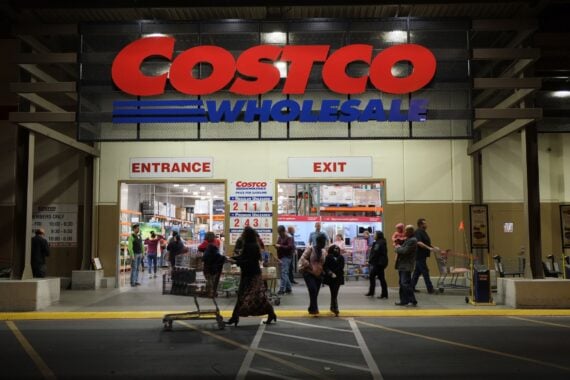As seniors move from a house to an apartment, a condo in a senior community, or to an assisted-living or long-term care facility, the downsizing demands divestment of a lifetime’s accumulation of stuff. While it may be a smart financial move, it’s difficult because people have an emotional attachment to their stuff. That means the work calls for sensitivity, but also a level of dispassion. The easiest path is to hire a skilled senior move manager, but they’re expensive: Elizabeth Mazza of New York City, a professional organizer who handles estates and moves for the elderly, charges $125 per hour. But she says following a few simple rules can save a bundle, and possibly your sanity.
MAKE SURE PARENTS ARE ON BOARD

Parents may have agreed to the move, maybe initiated it, and are looking forward to it, but the reality of getting rid of treasured possessions could trigger fear and stubbornness. In fact, a recent study shows that older people are less likely to give away possessions, even when they think they should, because it feels like a loss of control. Giving parents as many choices as possible in the process could help.
LEAVE PLENTY OF TIME

Some decisions on what to keep or discard will be easy. For instance, for parents moving into assisted-living or care facilities, kitchen and landscaping gear can likely can go. But parents may want to reminisce during every decision, which is why downsizing a home is not something to tackle over a weekend; expect it to take several months. Don’t rush. The Family Caregiver Alliance says parents’ loss must be acknowledged.
HAVE A TRANSITION PERIOD

Consider renting out the newly empty house, at least temporarily. This will generate income to defray parents’ relocation costs, and it’s helpful to be able to tell a parent resisting signing a lease elsewhere that “if you hate it, you can move back.”
BE REALISTIC ABOUT SPACE

Be realistic about how much room there is in the new place. Measure carefully, and consider making a paper floor plan with cut-outs of furniture to arrange for a visual of how much space there is — not how much parents want there to be. Discuss what stays based on what will fit; talking about where pieces go looks forward rather than back.
MAKE CLEAR WHO WANTS WHAT

Once a decision has been made about what to take, consult family members who might want what’s left, and let parents be the final word on where their legacy goes. What if nobody wants it? The only options are sale, donation, or trash.
Trending on Cheapism
EXPECT SOME EMOTION

Set aside time for the family to get together and reminisce about the items. Relatives who have been storing their own histories in their parent’s house are responsible for removing it, and they might have their own stories to tell. While this might be sad, it can also be cathartic.
DON’T EXPECT A BIG RETURN

Nobody likes to think their possessions are worthless, but unless a home is full of fine antiques, the return on even saleable items will be negligible. (One survey estimated there was $3,100 worth of stuff in the average home.) A tag sale could bring in a bit of extra cash for those with the energy and space, but selling items piece by piece on eBay, Craigslist, or through social media is time consuming. Estate liquidators will likely give hundreds rather than thousands of dollars for even full suites of furniture; charity thrift stores such as the Salvation Army, Goodwill, and ReStore will do a free, onsite appraisal and take away what they can.
MAKE SOME DONATIONS

Charities won’t take everything. Looking to donate a lot of books? Libraries might take what they can resell, but not all do. Hospitals don’t often want them. Prisons take only recent trade paperbacks. One solution: Try a charity bookstore instead. (But no one wants magazines.) Mattresses, box springs, and sometimes upholstered furniture are also hard, if not impossible, to unload. Homeless shelters may take sheets, towels, and pots and pans. Keep track of what you do donate — it’s all tax deductible, but you will need receipts for most non-cash donations.
Sign up for our newsletter
BE ORGANIZED AND DECISIVE

The only way to clear a parent’s home effectively is one room at a time, Mazza says. Start in a room’s farthest corner and proceed methodically, including closets and dresser drawers, item by item. Handle everything only once: That means no pile for things you will think about later. Get a box of heavy-duty contractor bags and be ruthless about what goes in; once an item is in, it can’t come out. Junk drawers, she says, should be dumped automatically into a bag. Label anything that’s not thrown out with a colored Post-It delineating what’s happening to it.
DO YOUR OWN APPRAISAL

Anything chipped or broken, no matter how well loved, can’t be donated. Evaluate clothing to be donated and get rid of anything ripped or stained. Costume jewelry with loose settings, scratched records, electronics that are on the fritz, and the like are destined for landfill. Items that are even questionable go directly into the contractor bags. It does not pay to think about this too much, Mazza cautions.
CALL THE JUNK PEOPLE

At a certain point, all avenues have been used and there is still stuff in the house, including an unholy number of big contractor bags. The solution is calling the junk removal guys, such as 1-800-Got-Junk. The national average for junk removal is $100, but if the truck is large because the goods are many, expect that figure to climb considerably.
STORE ITEMS, BUT ONLY TEMPORARILY

In a pinch, if there’s a chance somebody will buy excess items eventually or if you’re waiting for a relative to come take items away, get a storage space. This could be expensive, depending on location. A small space in Manhattan could be $200 a month. No matter the price, storage needs to be seen as temporary. Have a timeline for unloading its contents and stick to it, Mazza says.
KEEP ONLY VITAL DOCUMENTS

Designated caregivers for aging parents should have a copy of a will, funeral arrangements (most assisted-living and long-term care facilities require this to be pre-paid), and power of attorney. Bank records and tax-related items also need to be kept. There will probably be several boxes worth of other papers such as bank records. Most of this should be disposed of, and pages with Social Security numbers or other sensitive information need to be shredded. Fedex Office and Staples will shred documents, charging by weight, but many communities run free Senior Shred Days.
BE READY FOR AN AFTERMATH

Ideally a move will bring new friends and interesting activities, but there may be times parents look back and want to know what became of an item. Have an answer ready that is not upsetting or sad. Saying that pieces have been donated is generally good — it indicates beloved possessions are somewhere being beloved again.






